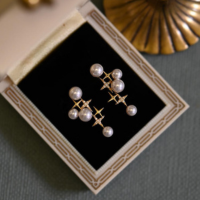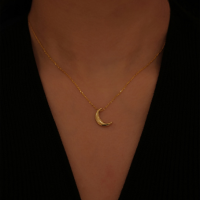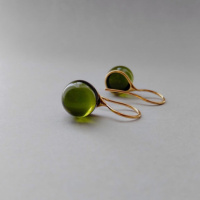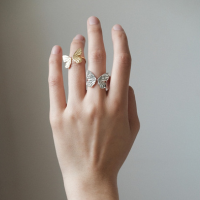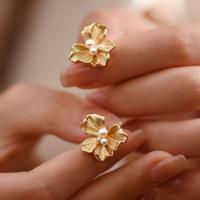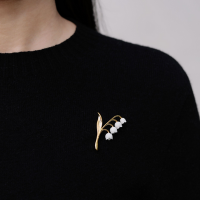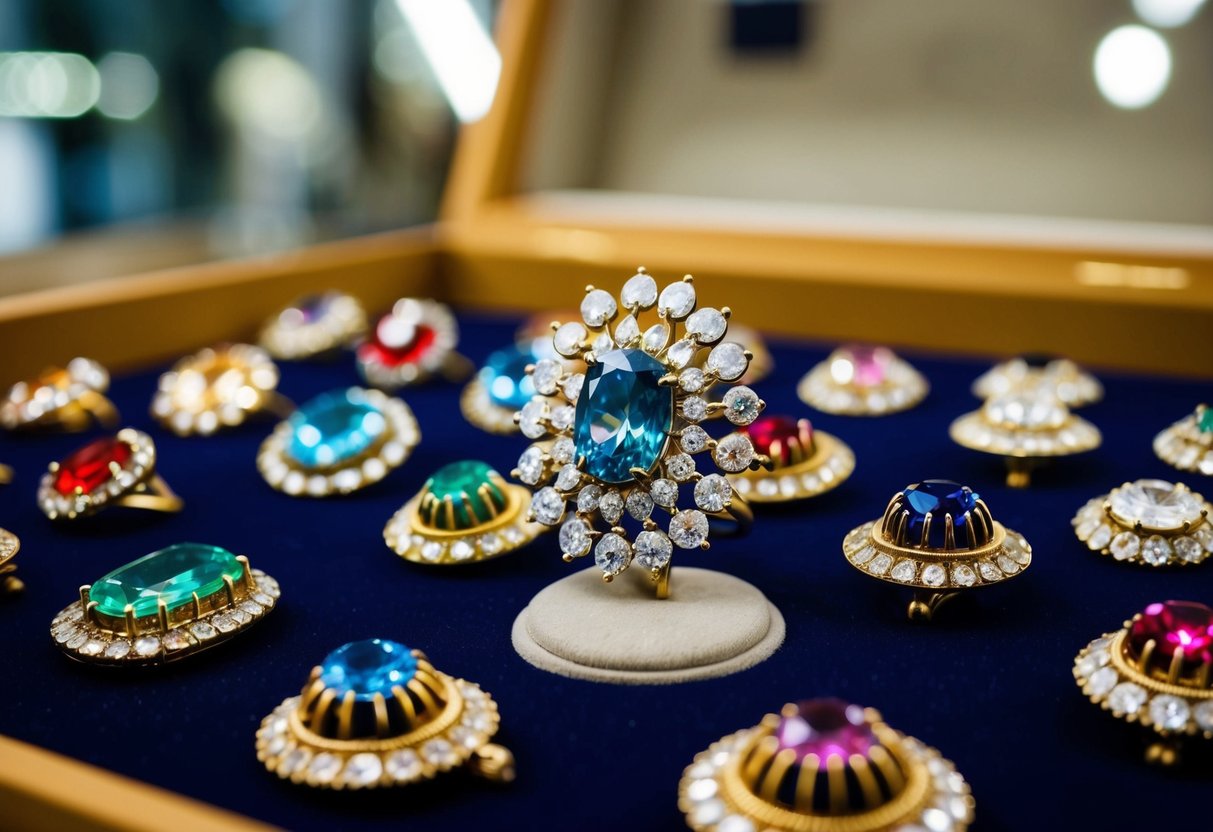
What is Paste Jewelry
Check out our personalized jewelry collections! (kids drawing jewelry, coin jewelry, wire jewelry, fingerprint jewelry, handwriting jewelry, and more)
In the world of jewelry, we often seek pieces that are both beautiful and unique. Paste jewelry captures this spirit with its stunning craftsmanship and rich history. Paste jewelry is made using glass stones designed to mimic the look of precious gems. These are carefully set in metal to create striking and affordable pieces.
Paste jewelry has been cherished for centuries. It first became popular in the 18th century when people began to appreciate the allure of these dazzling, yet more affordable jewels. While not as costly as fine jewelry, paste pieces have their own charm and can be just as beautiful to the eye.
Collectors and enthusiasts value paste jewelry for its design and history. The variety of styles and the skill of the craftsmen make it an exciting area to explore. Understanding how to identify and care for paste jewelry can enhance our appreciation and help us build a unique collection.
Key Takeaways
- Paste jewelry uses glass stones to imitate real gems.
- It has a rich history and various styles to explore.
- Care and identification can enhance a collection.
Origins and History of Paste Jewelry
Paste jewelry dates back to the 18th century. During this time, people wanted jewels that looked luxurious without the high price. George Frédéric Strass, a French jeweler, played a big role. He crafted glass stones with a striking resemblance to diamonds.
These stones were shaped and polished to sparkle. They were often set in silver or gold-looking metal. This gave everyone the chance to wear pieces that felt fancy and elegant. Wealthy people loved wearing paste at lavish events, keeping their real jewels safe.
By the 19th century, paste jewelry gained even more popularity. It was loved across Europe. We can find intricate designs, from rings to tiaras, showing just how skilled the craftsmen were. Paste jewelry also allows us to see the trends and designs that were popular over time.
In modern collections, paste pieces showcase creativity and artistry. Collectors and enthusiasts admire the craft and history behind these pieces. Knowing where paste jewelry came from helps us appreciate these gems even more.
What Is Paste Jewelry?
Paste jewelry is a type of costume jewelry known for its sparkle. It mimics the look of expensive gemstones at a fraction of the cost. The key components are glass and a blend of metals.
Composition and Materials
Paste jewelry uses glass as a gemstone substitute. The glass is skillfully cut to resemble precious stones like diamonds, sapphires, and emeralds. The pieces are often set in metals such as brass or silver. These metals provide a sturdy base and enhance the piece's appearance.
Creating paste pieces involves using leaded glass. The lead content increases the glass's brilliance and refractive index. This combination gives paste jewelry its signature sparkle, closely resembling real gems.
Manufacturing Process
The manufacturing process begins with cutting the glass. Craftsmen carefully shape each piece to mimic real gemstones. The glass is polished to a high shine, maximizing its gleam.
Next, each glass stone is set into metal settings. These settings provide both stability and style. The pieces can be ornate or simple, matching various fashion styles.
Finally, the jewelry is assembled into earrings, necklaces, or rings. The result is stunning, affordable, and versatile pieces designed to complement any outfit. We love how paste jewelry lets us enjoy the charm of fine jewelry without the high price tag.
Comparison to Fine Jewelry
In comparing paste jewelry to fine jewelry, there are notable differences and considerations. Paste jewelry offers diverse visual styles at a lower cost, while fine jewelry boasts high value and durability.
Visual Differences
Paste jewelry often uses glass or crystal to mimic the look of gemstones. It can display a range of colors and imitate precious stones convincingly.
Despite this, fine jewelry stands out with the use of genuine gemstones and metals like gold or platinum. The brilliance and color depth in fine gemstones are particularly distinct. This difference in materials gives fine jewelry a natural sparkle that paste jewelry often strives to replicate.
For those seeking a unique touch, paste jewelry might appeal with more experimental designs. In contrast, fine jewelry traditionally maintains classic elegance.
Durability and Wear
When it comes to durability, fine jewelry has a clear advantage due to its use of higher-quality materials. Gold and platinum settings secure genuine gemstones effectively. This makes fine jewelry suitable for everyday wear as it resists tarnishing and wear.
On the other hand, paste jewelry is generally more delicate. Materials like glass can scratch or chip more easily. The settings may not be as robust, which means extra care is needed during wear.
Regular maintenance for fine jewelry extends its life, while paste jewelry requires occasional attention to prevent damage.
Value and Cost
The value difference between paste and fine jewelry is significant. Fine jewelry often represents a long-term investment. Its value can increase over time, particularly if the piece features rare gemstones.
Paste jewelry, though beautiful, usually holds less value. It is accessible due to its lower cost, making it a good choice for fashionistas who want variety without a significant financial commitment.
For budget-friendly options that still offer style, paste jewelry is a fantastic option. Meanwhile, fine jewelry remains a testament to luxury and can be passed down through generations.
Styles of Paste Jewelry
Paste jewelry offers a range of styles from the elegance of vintage designs to the boldness of modern trends. It illustrates how creativity and craftsmanship work together to make unique accessories.
Vintage and Antique Designs
Vintage paste jewelry often reflects the charm of past eras. Pieces from the 18th and 19th centuries showcase intricate craftsmanship and delicate designs. Victorian paste jewelry often features floral patterns and sentimental motifs. These pieces are usually set in metals like silver or gold.
The Georgian era is known for using closed-back settings. This made the stones appear more brilliant. We see a lot of bows, ribbons, and foliage in these designs. Our fascination with these historical pieces lies in their uniqueness and their ability to tell stories.
Modern and Contemporary Trends
Today, paste jewelry embraces bold and creative designs. Contemporary pieces often play with colors, shapes, and styles to make striking statements. Minimalism is a trendy theme, with clean lines and simple forms that match most outfits.
Some modern designers experiment with unusual materials. They merge paste stones with acrylics or metals, creating fresh, surprising looks. Others focus on intricate beadwork and playful patterns, inspiring us to see jewelry as an art form. Bold colors and geometric shapes add a lively touch to this type of jewelry.
How to Identify Paste Jewelry
Identifying paste jewelry involves looking for specific markings and conducting simple gemstone tests. Authentic paste jewelry has distinct features that set it apart from other types.
Hallmarks and Markings
One way to spot paste jewelry is to look for hallmarks or specific markings. Many pieces have inscriptions to identify the creator or the time period. These might include initials, numbers, or symbols. Sometimes, they are stamped on the inside of a ring or on the back of a brooch.
While some paste jewelry has markings, not all do. This makes examining the piece's craftsmanship crucial. Paste jewelry often features intricate and precise settings which hold the glass stones securely. A loupe or magnifying glass can help locate subtle markings that aren’t easily visible.
Gemstone Testing
Testing the gemstones can also reveal if a piece is paste jewelry. Real gemstones and paste will react differently under light. Paste stones usually have a soft glow, unlike the hard brilliance of natural gemstones.
One easy test involves moisture. Breathing gently onto the stone can show how it reacts. Real gems clear quickly, while paste stones may fog briefly. Additionally, a hardness test can distinguish between the two, as paste is softer than most real gemstones. Care is needed to avoid damaging the jewelry during these tests.
Care and Maintenance
To keep paste jewelry looking its best, regular cleaning and careful storage are essential. We’ll go over the best techniques to maintain its sparkle and how to store it safely.
Cleaning Techniques
When cleaning paste jewelry, it's important to be gentle. Avoid harsh chemicals as they can damage the stones. Instead, we should use a soft, lint-free cloth to wipe away dust and dirt. For a deeper clean, a small bowl of warm, soapy water using a mild dish soap does the trick. Submerge the jewelry briefly and use a soft brush to clean around stones and settings.
Rinse thoroughly with lukewarm water to remove any soap residue. Dry the pieces carefully with a clean, soft towel to prevent water spots. Avoid getting moisture trapped in the settings as it might affect the paste.
Storage Solutions
Proper storage of paste jewelry helps minimize wear. We should always store our pieces in a dry, cool place. Keeping them in individual soft pouches or lined jewelry boxes can prevent scratches.
If we’re storing multiple pieces together, separating them with soft cloth or tissue prevents them from rubbing against each other. Avoid leaving jewelry in direct sunlight or near heat sources which might cause paste stones to fade or settings to weaken.
A consistent storage routine maintains the condition and appearance of your paste jewelry, ensuring it stays beautiful for years to come.
Popular Brands and Designers
When it comes to paste jewelry, several popular brands and designers stand out.
Boucheron is well-known for its elegant designs that blend classic and modern styles. Their paste pieces are often seen in high fashion circles and are both chic and timeless.
Another designer, Coco Chanel, made significant contributions with her bold use of paste. Her jewelry line offered high-quality imitation jewels that were highly fashionable, allowing more people to enjoy luxury-inspired designs.
Trifari is a brand synonymous with quality paste jewelry. Their creations often feature intricate details, making each piece unique. Collectors cherish their vintage lines for their artistic craftsmanship.
Incorporating paste elements, Swarovski has also made a name in the jewelry world. Their innovative use of crystal paste cuts adds sparkle and glamour to various jewelry pieces.
Using a mix of creativity and skill, Miriam Haskell created stunning pieces that feature ornate designs. Her work is well-regarded for its beauty and craftsmanship.
Collecting Paste Jewelry
Collecting paste jewelry is both exciting and rewarding. It offers us the joy of discovering unique pieces, the potential for financial gain, and the thrill of authenticating a rare find.
Building a Collection
When we start building a collection, it's important to focus on quality and variety. Look for pieces from different eras, like Georgian or Victorian. Each time period has unique styles and craftsmanship.
We should also pay attention to the condition of the jewelry. Chips or missing stones can lower the value. It's important to check the settings and the brilliance of the glass to ensure the piece is worth adding to our collection.
Attending antique fairs and auctions can be a great way to find unique items. These events often have experts who can provide valuable insights.
Investment Potential
Paste jewelry can be a worthwhile investment. As with any collectible, some pieces increase in value over time. Rarity and historical significance play major roles in determining worth.
We must research past trends and current market demand to make informed decisions. Some collectors find that certain styles or designers become more sought after, leading to higher resale values later on.
Networking with other collectors can also provide insights into which pieces might become valuable. This community can offer tips and share experiences about past successes with paste jewelry investments.
Authentication and Appraisal
Authenticating paste jewelry is crucial because it ensures that we are collecting genuine pieces. We should look for markings or hallmarks that can authenticate the age and origin.
Appraisals by trained gemologists or antiques experts are recommended to verify a piece's authenticity and value. These professionals use established criteria to identify genuine paste jewelry.
Having documented appraisals can also be beneficial if we plan to insure our collection. Access to professional advice and periodic re-evaluations will keep us informed about the true worth of our collection.
Frequently Asked Questions
We often find questions about how to spot paste jewelry, the materials used, and its value as a collectible. Let’s explore some interesting facts about these sparkling gems.
How can one discern whether a piece of jewelry contains paste gemstones?
Checking the weight can be helpful. Paste gemstones are lighter than real stones. Look at the color too. Paste stones sometimes have eye-catching colors that are more even. Additionally, the sparkle might differ from genuine gemstones. Using a magnifying glass can reveal air bubbles, a hint of paste composition.
What materials are typically employed in the creation of paste jewelry?
Paste jewelry often uses glass as the main material. Leaded glass is common, giving the stones a lustrous shine. Sometimes, they are backed with foil to enhance brilliance. Metals used can be various alloys or sometimes silver. Each element adds to the overall charm of paste pieces.
Can paste jewelry be considered a valuable collectible?
Yes, it can be. Many collectors love antique paste jewelry for its craftsmanship and history. Victorian-era pieces are particularly sought after. While not made from precious stones, their beauty and design work appeal to enthusiasts. Limited production pieces also increase demand and value among collectors.
For what purposes is paste jewelry commonly utilized?
We often see paste jewelry used to offer affordable glamour. People use it for evening events and fashion shows. It allows individuals to enjoy stylish looks without the cost of real gemstones. Historical re-enactments and theater productions also frequently utilize paste jewelry for authenticity and visual appeal.
What factors contribute to the price of paste jewelry?
Age is important, especially for pieces from the 18th or 19th centuries. The reputation of the maker can add value too. If made by a known designer or comes with a story, the worth increases. Condition matters, with pristine items catching higher prices due to their enduring beauty.
How did paste jewelry get its distinctive name?
The term "paste" comes from the French word "pâte," which means dough or paste. This refers to the technique of shaping and cutting glass to resemble precious stones. The artistry in mimicking real gemstones was highly regarded. Thus, paste jewelry got its name from the fundamental process used in its creation.

